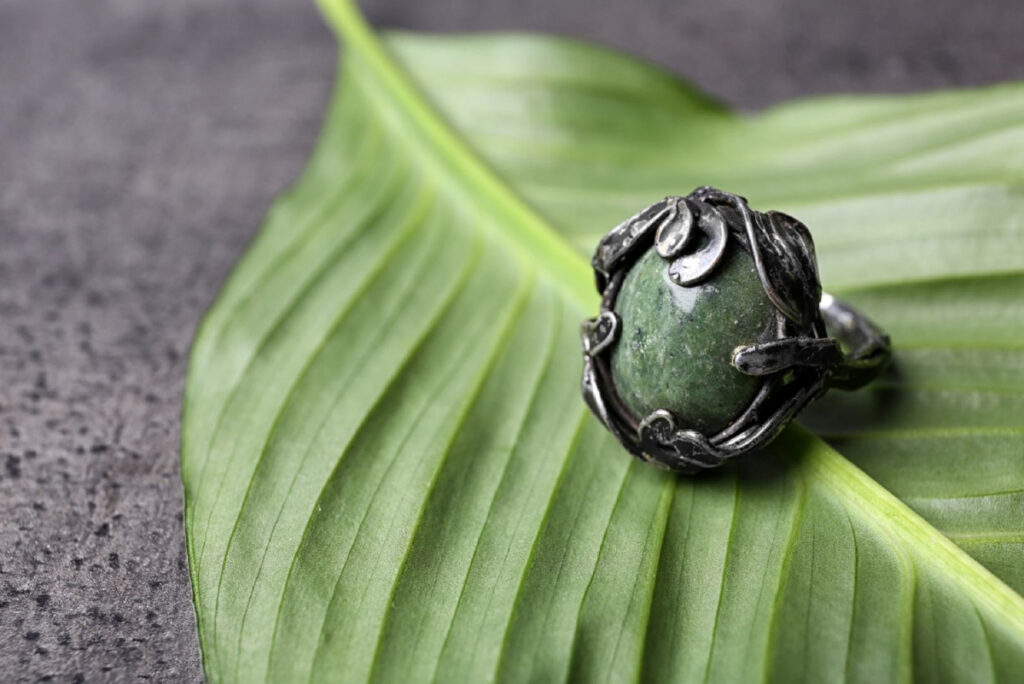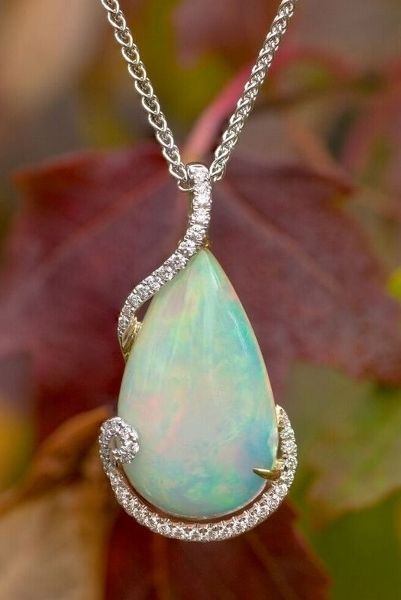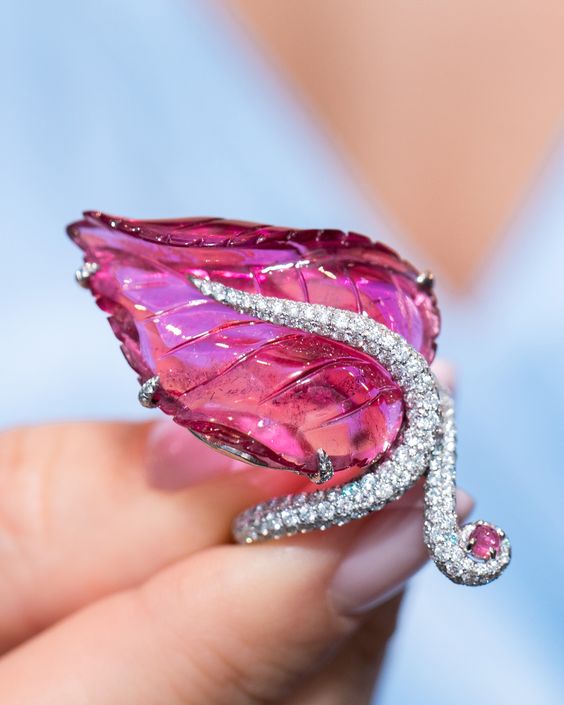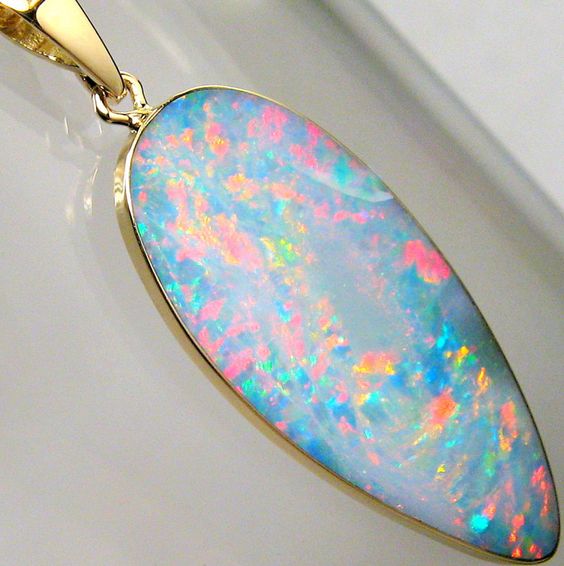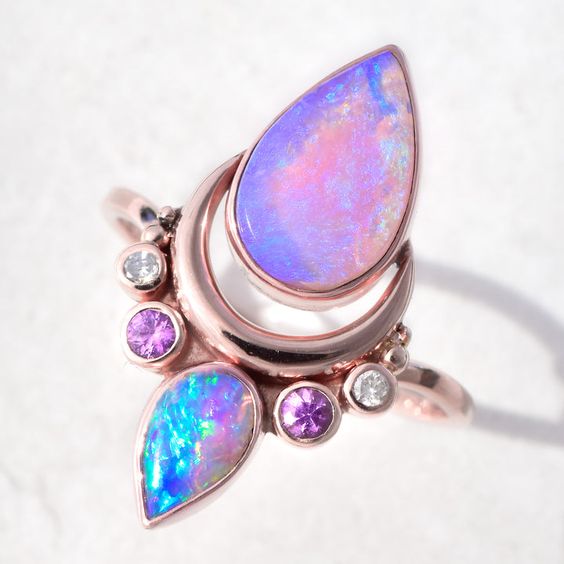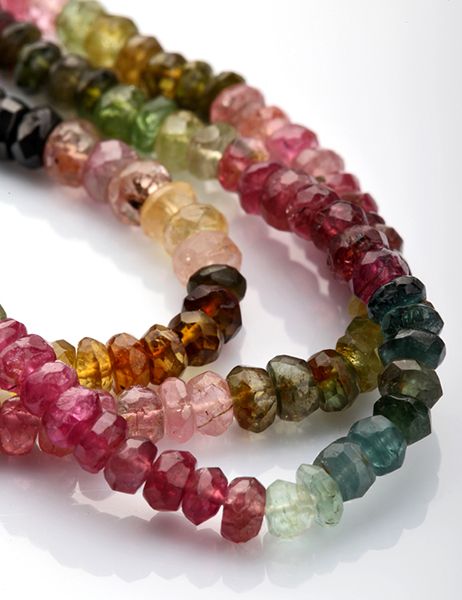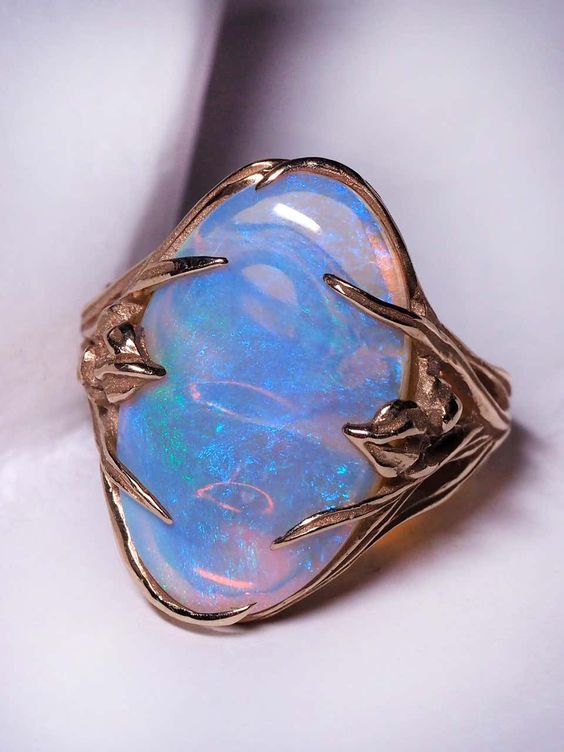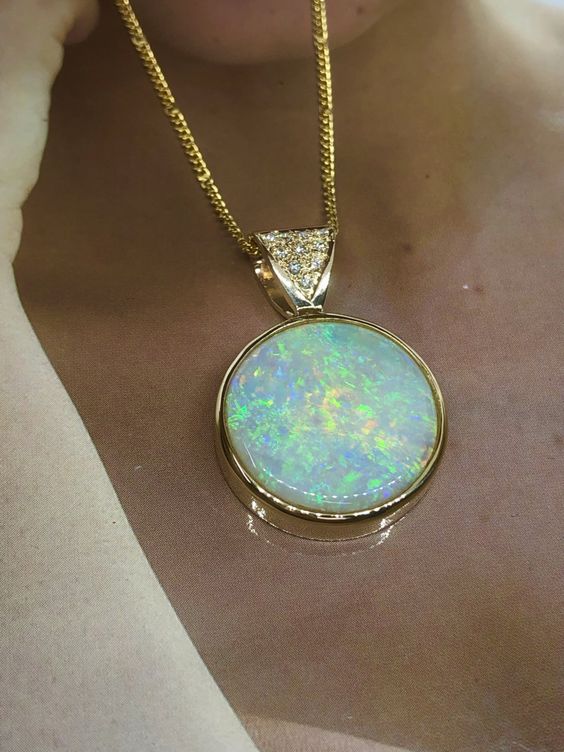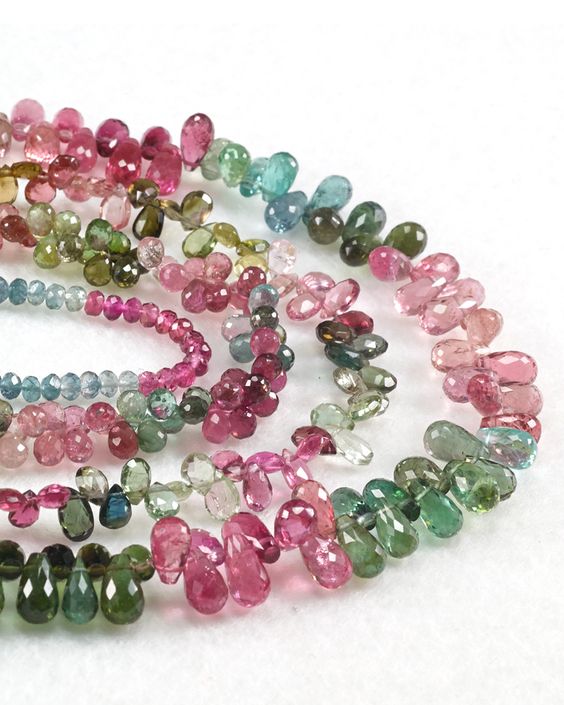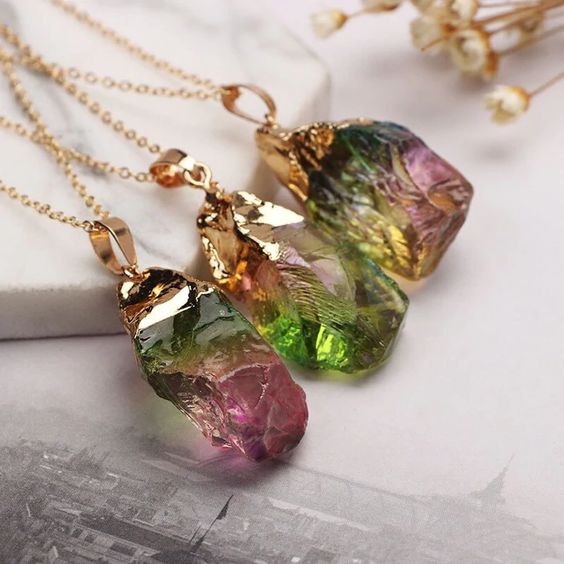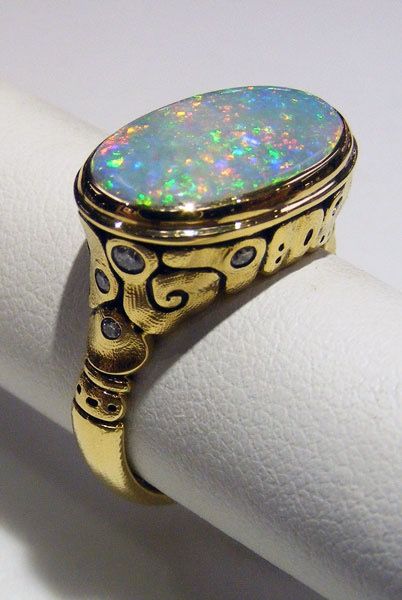Birthstones have been treasured for centuries, each representing a unique connection to an individual’s birth month and its symbolic meanings and properties. In the enchanting world of gemstones, October stands out as a particularly captivating month with not one but two beautiful birthstones – Tourmaline and Opal. These gemstones are as diverse and intriguing as the people born this month.
In this article, we will embark on a journey to uncover 10 incredible and lesser-known facts about Tourmaline and Opal, shedding light on their rich history, stunning characteristics, and the mystical allure that has fascinated humanity for generations. So, let’s dive into the fascinating world of October birthstones and discover the hidden wonders of Tourmaline and Opal.
1. Birthstone Origins
Photo credit: pinterest.com
The tradition of birthstones can be traced back to ancient civilizations, where people believed that gemstones possessed unique powers and characteristics that could influence their lives. The concept of wearing a gemstone corresponding to one’s birth month is thought to have originated with the Breastplate of Aaron, a religious garment described in the Bible’s Book of Exodus. This breastplate was said to contain twelve gemstones, each representing one of the twelve tribes of Israel. Over time, these gemstones became associated with the zodiac signs and later evolved into the modern practice of wearing a birthstone based on one’s birth month.
Tourmaline and Opal’s association with October is rooted in this historical tradition. Opal, known for its captivating play of colors, was believed to bring good luck and was associated with hope and purity. Tourmaline’s stunning array of colors was believed to have healing properties and was thought to protect from negative energy. These beliefs and the desire to have a unique birthstone for each month led to tourmaline and opal becoming the designated birthstones for October, enriching the tapestry of gemstone lore and symbolism.
2. Tourmaline – The Multi-Colored Gem
Photo credit: pinterest.com
Tourmaline, a mesmerizing gemstone, takes center stage as one of the enchanting birthstones for October. Its incredible variety of colors sets Tourmaline apart, making it a gem that never fails to captivate the eye and the imagination. The name “Tourmaline” is believed to have been derived from the Sinhalese word “turamali,” which translates to “stone with mixed colors,” a fitting description of its vibrant nature.
One of the most intriguing aspects of Tourmaline is its astonishing range of colors, often occurring in a single crystal. This unique feature is due to variations in its chemical composition. Tourmaline presents an awe-inspiring spectrum of hues from deep green to vivid pink, radiant blue to sunny yellow.
Among its most famous varieties are the “Watermelon Tourmaline,” which mimics the colors of the fruit, and the “Paraíba Tourmaline,” prized for its intense neon-blue shade. The sheer diversity of Tourmaline’s colors has led to its association with creativity and artistic expression, making it a favorite among jewelry designers.
3. Opal – The Play of Colors
Photo credit: pinterest.com
Opal, the second of October’s birthstones, is a gemstone that captivates with its enchanting play of colors. This gemstone is known for its unique optical properties that create a mesmerizing display of vibrant hues, making it one of the most sought-after gems in the world. The phenomenon of play of colors occurs due to the unique internal structure of opal, which diffracts light into a spectral display of colors that seem to dance and shift as the gem is viewed from different angles.
Throughout history, opal has been revered for its mystical and aesthetic qualities. In ancient times, the Romans believed that opal symbolized hope and purity. They called it “opalus,” which means “precious stone.” Opal has also been associated with love, passion, and emotional healing.
In various cultures, it was believed to bring good luck and protect against negative energies. However, opal has also faced superstitions and myths, with some cultures considering it a harbinger of bad luck. Despite these variations, opal remains a gemstone of great cultural significance, known for its captivating play of colors and ability to evoke a sense of wonder and magic.
More: Top 10 Largest Diamonds in the World
4. Geological Formation
Photo credit: pinterest.com
Tourmaline and Opal, the captivating October birthstones, owe their existence to fascinating geological processes. Tourmaline is formed deep within the Earth’s crust, where heat and pressure cause minerals to crystallize into elongated prismatic structures. These crystals often contain elements like iron, manganese, and lithium, giving Tourmaline its diverse colors.
The color variation results from the trace elements present during its formation, making it one of the most colorful gemstones. Tourmaline is often found in pegmatite veins, igneous rocks characterized by their large mineral crystals. Notable deposits of Tourmaline can be found in countries like Brazil, Afghanistan, and the United States, with each location producing its unique spectrum of colors.
On the other hand, opal is a mesmerizing gemstone born from a more delicate process. It forms when silica-rich water seeps into underground cavities and slowly evaporates, leaving behind silica spheres that arrange into the stunning patterns known as opalescence. These internal structures are responsible for opal’s unique play-of-color phenomenon.
Opal is often found in sedimentary rock layers, particularly in regions with a history of volcanic activity. Australia is renowned for its Opal deposits, including the world-famous Lightning Ridge, which produces some of the most vivid and sought-after Opals. Other opal sources include Ethiopia, Brazil, and Mexico, each contributing to the rich tapestry of Opal varieties.
5. Historical Significance
Photo credit: pinterest.com
Tourmaline and opal, the enchanting birthstones of October, carry a rich tapestry of historical and cultural significance. These gemstones have held a special place in the hearts of civilizations worldwide. Tourmaline was often used in ancient Egypt as a protective stone, believed to shield its wearer from harm. Its dazzling array of colors, resembling a painter’s palette, was thought to be a gift from the Egyptian sun god Ra.
Meanwhile, opal’s mesmerizing play of colors has been revered since Roman times when it was associated with love and hope. Romans considered it a symbol of purity and believed it could bring good fortune to its possessor. In the Middle Ages, Opals were cherished as tokens of hope and believed to possess the power of prophecy. It was said that Opals could change colors in the presence of poison, further adding to their mystique.
In other cultures like the ancient Greeks and Indigenous Australian communities, Opals were also highly regarded and believed to possess spiritual significance. These gemstones have transcended borders and eras, making their mark in many cultures and traditions, ultimately solidifying their place as cherished October birthstones with a captivating history.
6. Healing and Metaphysical Properties
Photo credit: pinterest.com
Tourmaline and opal are cherished for their dazzling beauty and their believed healing and metaphysical properties that have fascinated people for centuries. In its various colors, Tourmaline is often associated with grounding and protection. Black Tourmaline, for instance, is thought to ward off negative energies and enhance one’s sense of security. On the other hand, pink and green tourmalines are believed to foster love and compassion, promoting emotional well-being. Many wearers turn to Tourmaline to balance their chakras and find mental and spiritual clarity.
Opal, with its mesmerizing play-of-color, is also renowned for its metaphysical properties. It is considered a stone of inspiration, enhancing creativity and imagination. Opal is also believed to aid in emotional healing and strengthen relationships by promoting loyalty and trust. Many individuals turn to Opal to connect with their inner selves and embark on a journey of self-discovery.
More: Why is Diamond the Perfect Engagement Ring?
7. Famous October Birthstone Jewelry
Photo credit: pinterest.com
Famous October Birthstone jewelry has graced the collections of some of the world’s most renowned personalities and historical figures. Tourmaline, with its mesmerizing array of colors, has captured the hearts of many. One notable piece is the “Empress Dowager Tz’u Hsi’s Dragon Necklace,” featuring a magnificently carved tourmaline dragon pendant, which once belonged to the last Empress of China. This exquisite piece is a testament to the gemstone’s allure and its place in history.
Opal, with its captivating play of color, has also left an indelible mark in the world of jewelry. The “Andamooka Opal” is a legendary opal necklace adorned with a stunning opal pendant. This remarkable jewelry piece showcases the opal’s unique ability to display a vibrant spectrum of colors, from fiery reds to serene blues. Its beauty has attracted the attention of celebrities like Marilyn Monroe, who famously wore opal earrings, further solidifying opal’s place in the world of glamor and fashion.
Celebrities have frequently chosen Tourmaline and Opal for their exquisite jewelry pieces. Renowned actress Sarah Jessica Parker has been spotted wearing a dazzling Tourmaline and diamond necklace, showcasing her appreciation for the gem’s versatility. Similarly, famous actress Cate Blanchett has donned Opal earrings on the red carpet, adding a touch of elegance to her ensemble. These iconic jewelry pieces serve as a testament to the enduring popularity and timeless charm of October’s birthstones, Tourmaline and Opal.
8. Caring for Tourmaline and Opal Jewelry
Photo credit: pinterest.com
Tourmaline and opal are exquisite gemstones that require special care to maintain their natural beauty and luster. Here are some essential tips on how to care for and clean your Tourmaline and Opal jewelry:
- Gentle Cleaning: To clean your Tourmaline and Opal jewelry, use a mild, lukewarm, soapy water solution and a soft brush or cloth. Avoid harsh chemicals or ultrasonic cleaners, as they can damage the gemstones or their settings.
- Avoid Extreme Temperatures: Tourmaline and Opal are sensitive to extreme temperature changes. Avoid exposing your jewelry to rapid temperature fluctuations, such as going from hot to cold environments, as this can cause cracks or fractures.
- Store Properly: When not wearing your Tourmaline and Opal jewelry, store them separately in a soft pouch or lined jewelry box to prevent scratches and protect them from dust and light.
- Regular Inspections: Periodically inspect your jewelry for loose stones or any signs of wear and tear in the settings. If you notice any issues, have them repaired by a professional jeweler promptly.
- Precautions: It’s essential to remove your Tourmaline and Opal jewelry before engaging in activities that could expose them to potential damage, such as sports, heavy lifting, or household chores. Chemicals found in cosmetics, perfumes, and hairsprays can also harm the gemstones, so it’s best to put on your jewelry after applying such products.
9. Fun and Unusual Facts
Photo credit: pinterest.com
Tourmaline and Opal, the enchanting October birthstones, hold a treasure trove of quirky and lesser-known facts. Did you know that Tourmaline is the only gemstone that can be found in every color of the rainbow? From vibrant reds to serene blues, Tourmaline dazzles in a kaleidoscope of hues, making it a favorite among gem enthusiasts seeking variety.
On the other hand, opal’s name derives from the Sanskrit word “upala,” which means “precious stone.” Its unique play-of-color effect, known as opalescence, is caused by tiny silica spheres that refract light, creating a mesmerizing dance of colors within the gem. Intriguingly, Tourmaline has a reputation as a “love stone” due to a superstition in ancient times. It was believed to inspire love and friendship when exchanged as a gift.
Meanwhile, opal has garnered both admiration and fear over the centuries. Some cultures believed opal brought good luck, while others considered it a harbinger of misfortune. In the 19th century, writer Sir Walter Scott’s novel “Anne of Geierstein” contributed to Opal’s superstitions by portraying it as a cursed gemstone that caused its wearer’s death. These superstitions have added an aura of mystery and fascination to these already enchanting gemstones.
More: 10 Creative Ways to Wear Diamonds
10. Birthstone Gifts
Photo credit: pinterest.com
When searching for the perfect gift for someone born in October, considering their birthstones, Tourmaline and Opal can add a meaningful touch to your gesture. These gemstones, with their stunning colors and unique characteristics, offer a wide range of gift ideas that are sure to be cherished by the recipient. One thoughtful option is a customized piece of jewelry featuring Tourmaline or Opal.
A necklace, bracelet, or pair of earrings adorned with their birthstone not only adds a personal touch but also symbolizes the wearer’s connection to their birth month, making it a special and sentimental gift. Gifting birthstone jewelry goes beyond its aesthetic appeal; it carries profound symbolism. Tourmaline, with its various colors, represents creativity, healing, and protection, making it an ideal gift for someone looking to bring positive energy into their life. Opal, known for its play-of-color and ever-changing appearance, symbolizes hope and inspiration.
Gifting Opal jewelry can convey a message of optimism and encouragement for the future. When you present a loved one with jewelry featuring their birthstone, you’re not only giving them a beautiful accessory but also a tangible reminder of your thoughtfulness and well wishes for their birthday and beyond.
In conclusion, the world of gemstones is rich and diverse, and October’s birthstones, Tourmaline and Opal, truly stand out as remarkable jewels with a deep and fascinating history. So, the next time you’re searching for a meaningful gift or simply want to indulge in the world of gemstones, consider Tourmaline and Opal, the treasured gems of October. Their captivating beauty and rich symbolism make them not only gems of adornment but also gems of sentiment, reminding us of the unique qualities and limitless potential that each October-born individual carries within themselves.
What is the significance of Opal’s play-of-color effect?
Are there any myths or legends associated with Tourmaline and Opal?
What are the healing and metaphysical properties of Tourmaline and Opal?
Can I wear Tourmaline and Opal jewelry every day, or should I take special care of them?
While both Tourmaline and Opal are relatively durable gemstones, it’s advisable to take some precautions to protect them from scratches and impacts. Proper care and occasional cleaning will help maintain their beauty.
